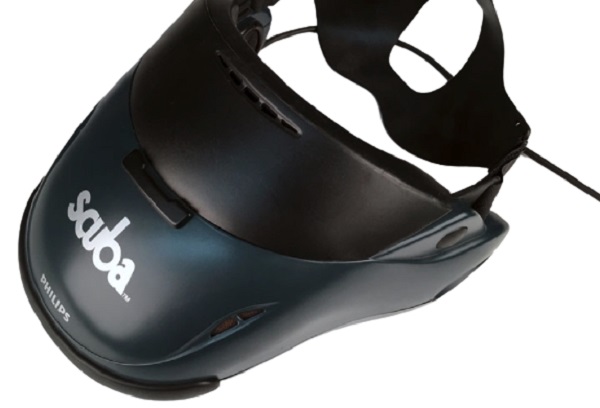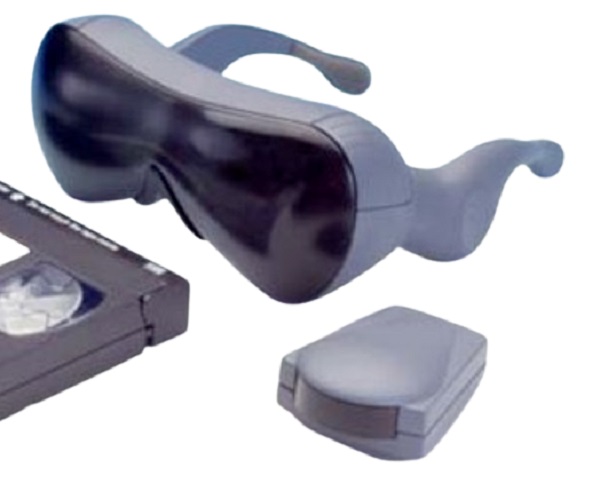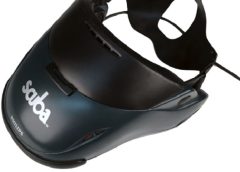
After the rush that was 1994 you would be forgiven for thinking there was any more VR news to report on. Developers released poorly conceived virtual reality consoles, and films featured ridiculous virtual reality headsets. But yet, in 1996 Koninklijke Philips N.V. (literally ‘Royal Philips’, commonly shortened to Philips) attempted to capitalize on the VR trend by releasing the Scuba Virtual Immersion Visor in 1996. By some miracle, over 55,000 headsets were sold, mostly in Japan.
The Philips Scuba Visor was a decent headset for being just a video headset. The construction was rugged and well placed and it has a rather high FOV compared to other headsets at the time. It does of course have its downfalls which lead to its demise.
The unit rested on your forehead and was a type of facemask similar to the Virtual Boy only it resed on the head instead of a desk. Its rubber face padding cut you off from the outside world and made what little content there was for this device quite immersive. It would have been one of the best VR headsets released if it wasn’t for the blurry optics. The screen always seemed blurry and after a while causes your eyes to hurt. It did have IPD adjustment, but nothing seemed to improve the virtual quality for most people.
Weighing 544 g with an active-matrix LCD screen with a resolution of 263×230 pixels and a 50-degree diagonal field of view, the Scuba was designed originally as a VR helmet for the Atari Jaguar home game system and it even worked with Atari used only in its Missile Command game. It was a pretty comprehensive system that did well at the time but despite its futuristic appearance, the Scuba Virtual Immersion Visor didn’t actually involve virtual reality of any sort. It was quite literally a low-resolution television set you had to wear on your head, and it may have been the least useful video game peripheral ever made even making the Nintendo Virtual Boy look complex.

Another headset doomed to fail before it was launched was the VRex VRSurfer. It was a wireless 3D-shutterglasses system for PC and TV/Video. It utilized a VGA-pass-through controller which synced to an interlace screen mode. The first and only game for it was Vengeful Rites with a description that reads: “Embark on an epic adventure exclusively for the VRex System. Use your own hands to cast magic, fire bows and slice through your enemies on your quest to exact vengeance against the evil Dragore. Learn new spells and craft new gear to become the greatest Serafin Warrior of all time!”.
OK, so it wasn’t that impressive, but it was the first VR headset to run on a modern PC and still works on PC’s of today (with some backwards compatible graphics cards). But yet it just could save VR from the public arms and VR soon went back to commercial sales only, but it also meant VR could grow into other areas which could well be the future of VR even today and that is the health care industry.


